The Mercedes Unimog is one of the most versatile road-going vehicles on sale in the UK.
What is a Mercedes Unimog?
Its name is derived from the German 'Universal-Motor-Gerät' (Universal Motorised Working Machine) and in its most basic form is a rugged chassis cab vehicle that is tailored to individuals', business's and government authorities' requirements.
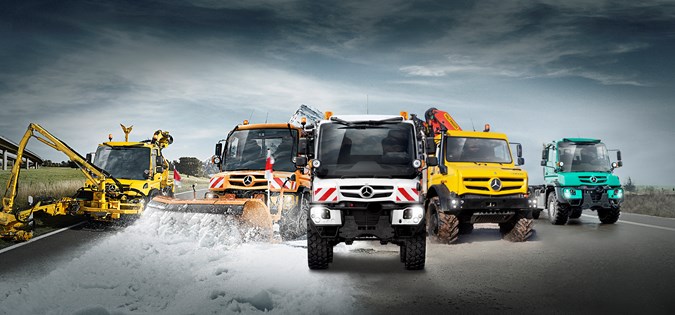
Think of it as an automotive Swiss Army Knife. It’s built to be adapted to myriad jobs, from firefighting to farming and almost anything in between, with modular add-ons that can be changed quickly and easily.
It’s as at home off road as it is on, and can even run on railways. For example, in certain configurations it's able to pull up to 1,000 tonnes along rails thanks to its hardcore all-wheel drive, differential locks and torque convertor.
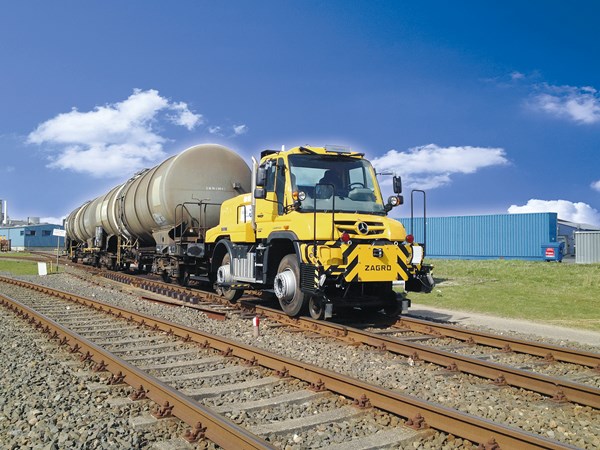
There’s the option to seat anywhere between two and seven people, while a number of wheelbase lengths and clever optional extras are available to tailor a Unimog to your requirements.
We’ve had the chance to try a U 430 variant to see what it’s like from the driver’s seat.
Affectionately labelled Unimog Jack because of the wrap (carried out as part of the UK sales drive for Unimog), this model has the most powerful engine and the optional automated manual gearbox.
What’s the Mercedes Unimog like to drive?
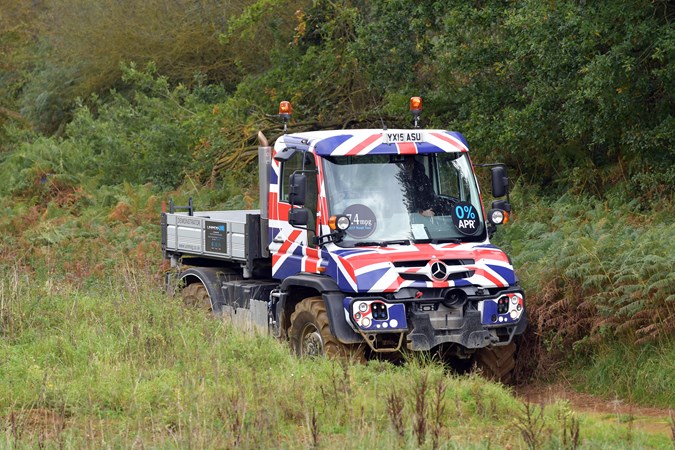
It’s best described as ‘agricultural’. Think of it as mid-way between a tractor and a truck, but that's not necessarily a bad thing.
For instance, it has an extremely high driving position, which gives it exemplary all-round visibility. You even get front and rear cameras to better see any attachments you've got fitted.
The steering wheel is huge. But more intriguingly, if you go for the Vario Pilot option, you can shift it to the other side of the cab in just 30 seconds.
Yes, really.
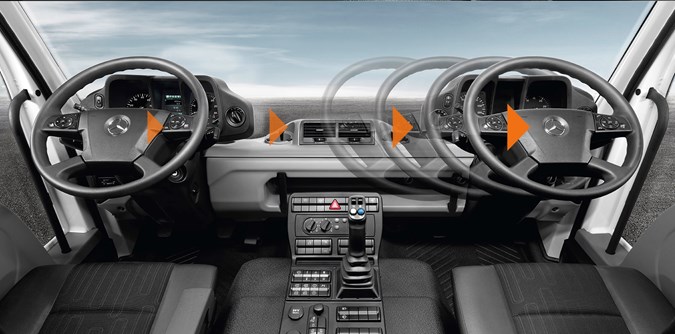
While the ability to switch between right- and left-hand drive might only seem useful for occasional jaunts to the continent in your Unimog, the real reason for fitment is two-fold: the residual value is propped up because it means you’re able to export the vehicle worldwide, and it offers those cutting hedges a better view of the road ahead in some circumstances.
Slow gearbox, unsual engine brake
The U 430 on test was fitted with the optional automated-manual version of the standard eight-speed gearbox
This seems to take a very long time to shift gears compared similar gearboxes in more conventional vehicles, but it is at least simple to control using the large paddle just underneath the right-hand side of the steering wheel.
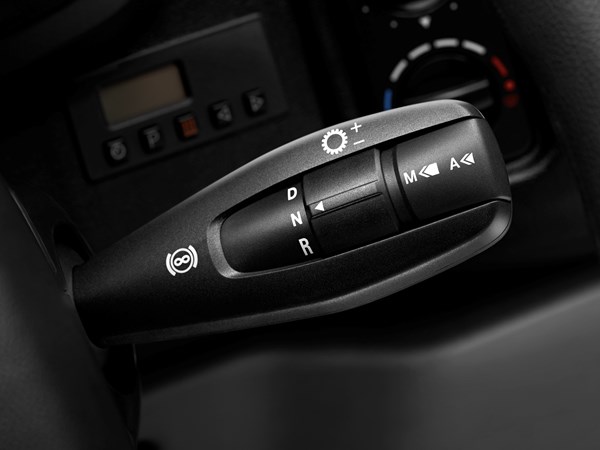
Push the button on the end to switch from automatic to manual settings, and then pull to change up and push to change down.
You use a rotary switch on the paddle to flick the Unimog between Neutral, Drive and Reverse, and click it down towards your knee to initialise the engine brake.
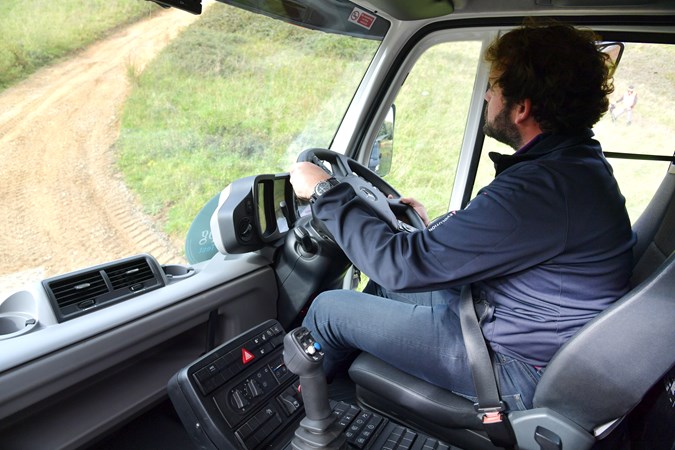
As the name suggests, the engine brake slows the vehicle down by using engine power, thus making dramatic savings on brake disc and pad wear. There is a choice of two braking speeds depending on how fast you’re going and how much load you’re carrying and/or pulling.
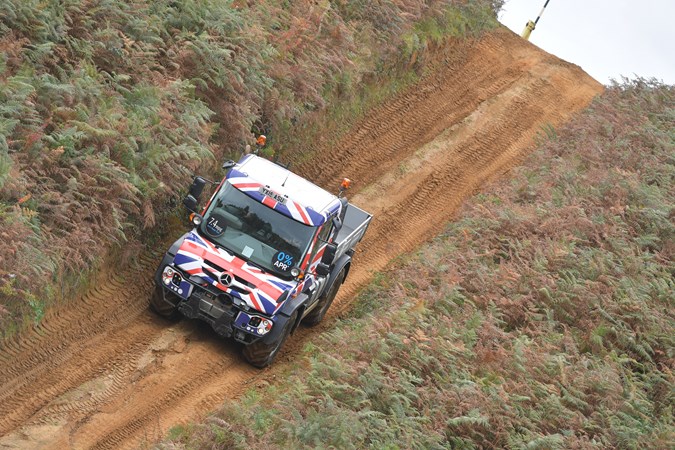
After a bit of practice we found ourselves using this for almost all driving scenarios, only resorting to the more familiar footbrake to get the Unimog to a standstill.
Six cylinders, 7.7 litres and 1,200Nm of torque...
We found the engine exactly as gruff and powerful as the Unimog’s looks suggest.
This is the most powerful motor available in the range – a six-cylinder 7.7-litre with 299hp and a startling 1,200Nm of torque, making for a maximum permissible gross weight of 14 tonnes.
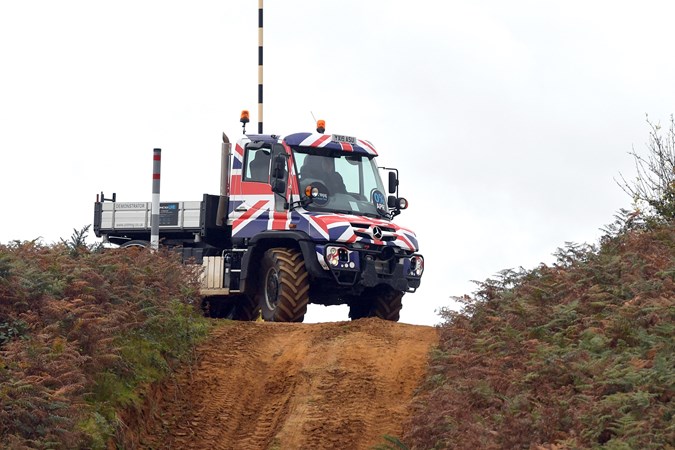
It doesn’t have a 0-62mph time because top speed’s only 56mph. The 14.3-metre turning circle is small enough for relatively easy parking, but you have to work hard – it requires loads of turns of the ‘wheel to negotiate a hairpin bend.
Our test vehicle had a few other optional extras, including a tyre-pressure control system that features in-cab adjustment, an additional low-range gearbox, dual-circuit hydraulics and a two-line trailor brake.
What attachments can I have on my Mercedes Unimog?
The list of mechanical add-ons is exhaustive. They’re powered by in-built hydraulics that benefit from an infinitely variable hydrostatic drive, which means they can function independently of engine speed.
You’re able to connect things to the front, rear or under either side of the floor between the axles.
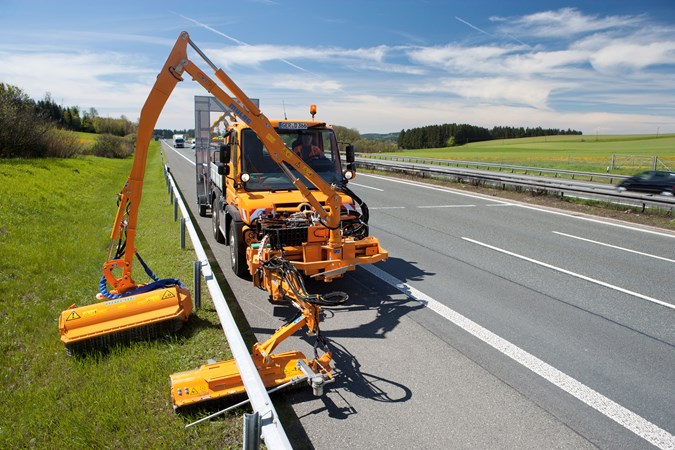
These can be used to control the likes of hedge trimmers, snow ploughs, road sweepers, cranes, tippers, buckets and cleaning equipment, according to your requirements.
There are many other extras you can specify, including water cooling for the tyres and windscreen for fire-fighting, wagon braking systems for railway use, and grit-spreading features.
Where can I find a Mercedes Unimog for sale in the UK?
There are seven key Unimog dealerships in the UK with specially trained staff able to help you order one to your required spec.
Furthermore, there are over 4,500 used Unimogs around the country and a strong secondhand market to boot.

While the six-figure starting price may seem hard to swallow, Mercedes does offer various finance packages,including Hire Purchase, Operating Lease and Finance Lease options.
Where can I get my Unimog serviced?
You can take your Unimog to one of the 35 Mercedes-Benz Trucks service centres – all of which are open 24 hours, every day of the year to keep you mobile.
Overnight servicing minimised daytime downtime.
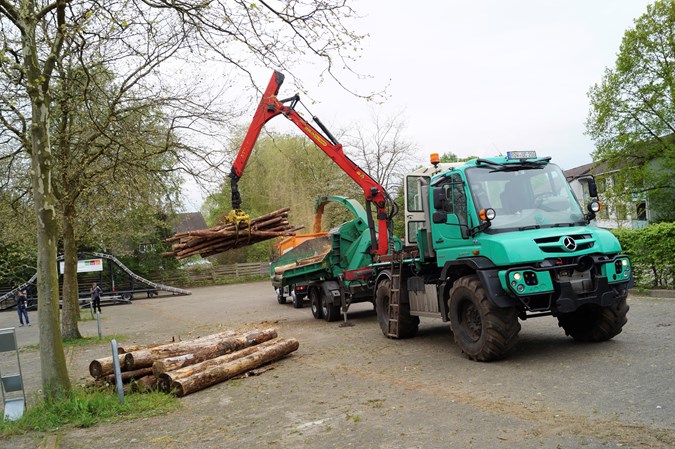
There are fixed-price service packages available at purchase, which can be tailored based on intended usage.
Mercedes Unimog: engines, gearboxes and wheelbases
All of the engines on offer are turbodiesel and come from the Mercedes-Benz Trucks line-up. They’re labelled OM 934 (four-cylinder) and OM 936 (six-cylinder), and are available in multiple power outputs as detailed below.
The standard gearbox has eight forward gears and six reverse gears, and is also available as an automated manual as per our above review. There are crawler and working gears available alongside the basic ratios, making for a maximum of 24 forward ratios – and up to the same in reverse.
Mercedes Unimopg types:
- Unimog U 216 and U 218 – these are the compact Unimogs. A wheelbase of 2,800mm and 12.6m turning circle mean if you need to work in confined spaces, these are best. Payload between 7.5-10 tonnes, with four-cylinder engine making either 156hp or 177hp and torque of 650Nm or 750Nm respectively
- Unimog U 318 – longer than U 218 with higher payload, but still uses 177hp four-cylinder motor. Wheelbase is 3,000mm
- Unimog U 423 – Wider than U 318 and equipped with six-cylinder engine with 231hp and 900Nm of torque. Max permissible gross weight is 13.8 tonnes
- Unimog U 427/U 429/U 430 – Longer than U 423 with choice of three six-cylinder engines – 272hp, 286hp and 299hp respectively along with torque of 1,100Nm, 1,150Nm or 1,200Nm. Max permissible gross weight up to 14 tonnes. Wheelbase grows to 3,150mm
- Unimog U 527/U 529/U 530 – Larger still than the U 4XX series, but with the same engine line-up. Gross weight permissible rises to 16.5 tonnes. Wheelbase is 3,350mm
- Unimog U 4023 and U 5023 – higher ground clearance for more extreme off-roading situations. Only available with high-performance 231hp six-cylinder motor. Will ford water up to 1.2 metres in depth. U 5023 has highest-possible ground clearance of 470mm. Wheelbase is also biggest in the range: 3,850mm. U 5023 pictured below:
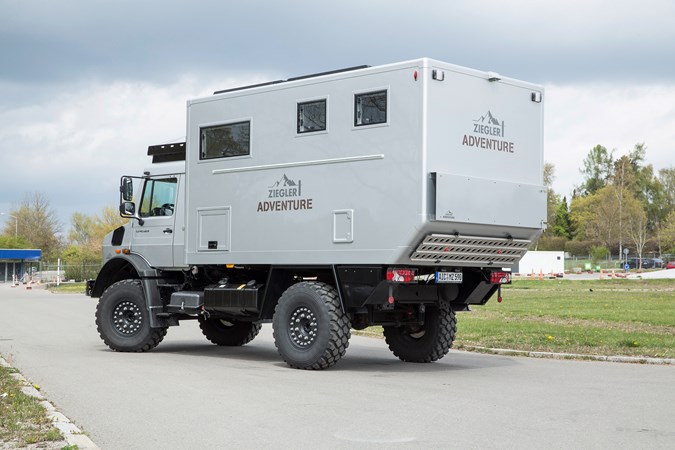
Verdict
There isn’t another road-going vehicle quite like the Unimog. Its closest rivals are far more tractor-like in their appearance and utilitarian nature – the JCB Fastrac being a good example.
For extreme flexibility, it's tough to beat. But you need to consider carefuly to make sure you get the right version to properly fulfil your requirements. But we doubt you'll have many regrets...

Just so you know, we may receive a commission or other compensation from the links on this website - read why you should trust us.

